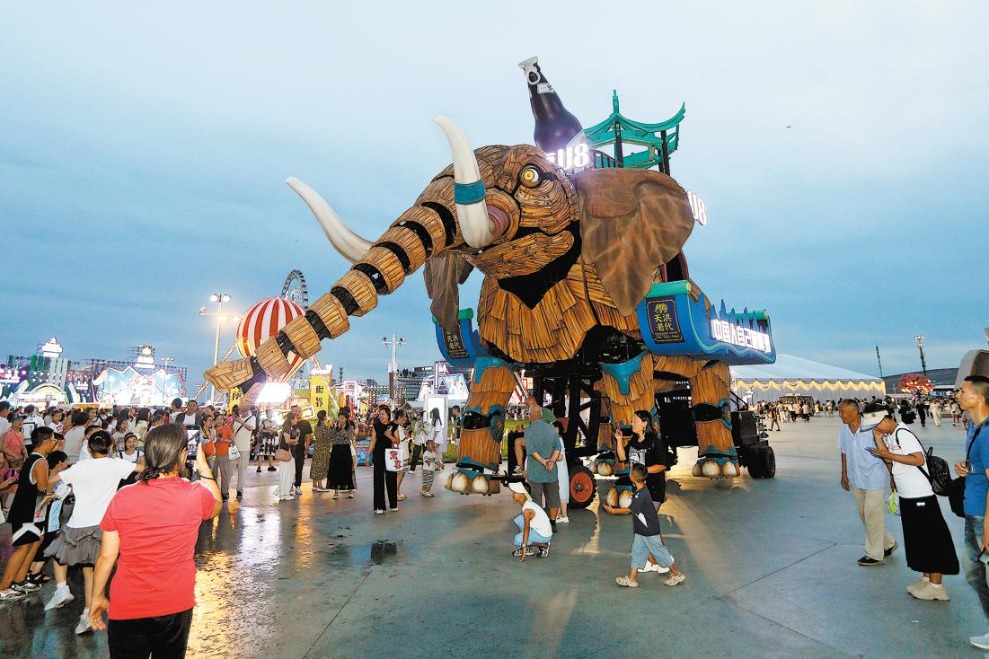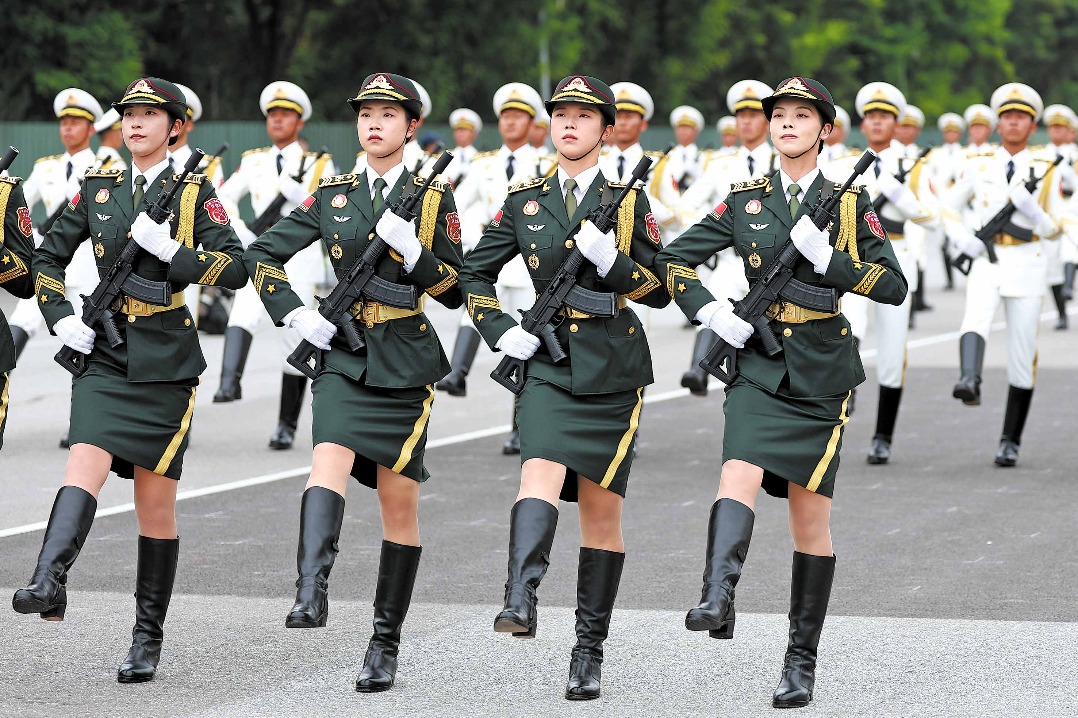Figuring out a legacy for Lord Rabbit
Craftsman Shuang Yan strives to ensure that long-established festival totem continues to thrive in contemporary China, Yang Feiyue reports.

Colorfully painted sculptures jump into view when one sets foot in Shuang Yan's home in northwestern Beijing's Yanqing district.
In particular, rows of delicate rabbit figurines take up a large area of his study, where Chinese writing brushes, pigment and other art tools are scattered around.
The arrival of the Year of the Rabbit has made Shuang busier than usual, as his expertise in a time-honored tradition has been given a brighter spotlight.
For approximately five decades, the Beijing resident, in his 60s, has committed himself to the creation and inheritance of Lord Rabbit, known as Tu'er Ye in Chinese. The character features a human body with a rabbit's ears and mouth.
While Roger Rabbit and Bugs Bunny are popular in the Western world, Lord Rabbit rules Beijing.
"It has been a mascot for many households in Beijing," says Shuang who has been exposed to the art since he was 7.
The rabbit god is not only a local handicraft that symbolizes happiness and good luck, but also a popular clay toy for children during traditional festivals.
"I have given lectures on Lord Rabbit's cultural significance everywhere, especially since Spring Festival arrived," Shuang says.
Ancient roots
In the past, the Lord Rabbit was mainly associated with Mid-Autumn Festival, but as people move around to meet one another at Spring Festival much more than they did before, the rabbit figurines have become a trend over this period, he notes.
"It has evolved into a phenomenon where people will ask for the Lord Rabbit during temple fairs," Shuang says.
Shuang's emotional bond with the artwork is evident in his serious and exuberant promotion of its profound history.
"The Lord Rabbit's true value lies in its folk customs," Shuang says.
The rabbit was traditionally believed to be a deity, living on the moon, in charge of health and medicine. One legend goes that Beijing once suffered a plague before Mid-Autumn Festival. The Chinese moon goddess, Chang'e, dispatched the rabbit to cure the disease. An iconic image of the rabbit god is one wearing a golden helmet and armor, while wielding a pestle, a tool for grinding medicinal ingredients.
Lord Rabbit has made its presence felt amid the country's profound rabbit culture, with the animal long being considered an auspicious symbol of happiness and longevity.
The animal's cherished role has been found in ancient relics, such as portraits depicting jade rabbits pounding and filtering medicine from the Han Dynasty (206 BC-AD 220).
To date, the earliest mention of the Lord Rabbit was found in a written work by Ji Kun, a scholar from the Ming Dynasty (1368-1644), which painted a vivid picture of Lord Rabbit emerging and being worshiped in the capital city during Mid-Autumn Festival, the 15th day of the eighth lunar month.
But Shuang has found traces that push back the history of the rabbit god even further.
The fox tails worn on sides of the Lord Rabbit's face are indicative of an accessory worn by nomadic nobles back in the Yuan Dynasty (1271-1368), Shuang says.
"Therefore, it should at least originate from the Yuan Dynasty, before gaining greater popularity in the Ming and Qing (1644-1911) dynasties," he adds.
Inheriting the craft
In addition to publicizing the tradition, Shuang and his several apprentices have been swamped, trying to meet the increased demand for figurines of the Lord Rabbit during Spring Festival.
"The tradition dictates that Lord Rabbit from the previous year had to be sent away, meaning to be broken, because it is believed to have taken with it all the disease and disaster," Shuang says.
Therefore, the public usually expects a new one in the new year.
The manufacturing process can take up to a dozen of days.
First, the clay is brought back from suburban areas, such as western Beijing's Mentougou district.
Then, it is processed by being smashed and added with water to make a paste.
"After 10 days of precipitation, only the middle part will be used," Shuang explains.
Then, a dozen more steps ensue, including molding, polishing and applying the base color.
The last step is the color painting, which is the most crucial part, as it determines the mien of Lord Rabbit.
"The major colors are red, yellow and blue, all of which can be complemented by adjunct colors," Shuang says.
"Each Tu'er Ye will look different with the changes in its brows and eyes," he explains.
Shuang was immersed in the Lord Rabbit culture during childhood as he watched his father, a painted sculpture master, fashion artworks every day.
"My father would give me a lump of clay after school, and it would be an assignment for me to create something out of it," Shuang recalls.
"Afterward, he would check my work."
He says his father was tough on him and hoped that, one day, Shuang would surpass him.
However, at the time, the youngster frowned upon the loneliness and meager pay that came with the traditional craft, and he sought better opportunities in Shenzhen, South China's Guangdong province, where, in 1990, he managed to make 5,000 yuan ($741) a month by selling electronics.
It was 10 times as much as he would make in Beijing by making the Lord Rabbit.
Yet, two years later, his father called and asked him to come home.
"He said if I gave up, the Lord Rabbit might disappear," Shuang says.
After struggling with the problem for half a month, Shuang made a visit back to Beijing and he was acutely aware of his father's desperation and eagerness for someone to inherit the craft.
He cracked and decided to give up his business in Shenzhen to return home and carry forward his father's legacy.
Colored clay sculpturing craft of Tu'er Ye has been one of Beijing's more than 12,000 intangible cultural heritage items, and was inscribed on the national list in 2014.
As Shuang made inroads in the craft, he was enamored by its history and culture, and continued to hone his skills. In 2018, he was named a national heritage inheritor of the craft, which helped fuel his passion in preserving the original elements of the Lord Rabbit.
Modern context
He says he is most concerned about the fact that some of the rabbit figurines on the market have lost their traditional characteristics.
"Some major elements shouldn't be changed, otherwise it could cause misunderstandings of the story and folk customs behind it," he says.
For instance, he wants the public to understand the rabbit is actually a female.
"She borrowed a helmet and armor from a deity in a temple and dressed like a man for the convenience of treating patients in the then-feudal society," Shuang explains.
On the other hand, there can only be one flag behind her back, because legend has it that she was so tired, after going door to door to deliver medicines, that she rested under a temple flag, he adds.
"The story also reflects people's wish for, and pursuit of, health," he says.
Other taboos include the rabbit's steed, which can be a tiger, a deer or other auspicious animals and flowers, but never the dragon, which symbolizes ancient emperors.
However, Shuang is not against innovation within reason.
He does craft the figurines with new materials such as resin to make them lighter or to create detachable ears.
Last year, Shuang added Olympic elements to the traditional items. For example, he fashioned a rabbit god holding a ski pole, which was displayed at the Winter Games venues.
To preserve the old art, Shuang has taken several apprentices, including his son.
"There's no threshold to be my student; as long as you want to learn, I'm willing to teach," he says.
In addition, Shuang has actively joined various art events to promote Lord Rabbit culture.
Cheng Xiqi an office worker got a good measure of the tradition's charm at an art event in celebration of the Mid-Autumn Festival last year. "Shuang held our hands in the process of coloring the Lord Rabbit and drawing related accessories," Cheng recalls.
"The craftsmanship is impressive and so are the folk customs and culture behind it," she adds.
As many schools in Beijing have launched intangible cultural heritage programs in recent years, Shuang has readily taken on their invitations to present the art and skills, in a bid to inspire the younger generation's interest in the tradition.
So far, he has taught thousands of primary school students how to make the clay rabbits.
"Hopefully, some of them will learn all the skills associated with the craft from childhood and carry on this tradition."
Recently, Shuang initiated a project to systematically organize all the image and text resources on the Beijing painted clay sculptures.
"I hope that more people can come to know the real Beijing Tu'er Ye," he says.

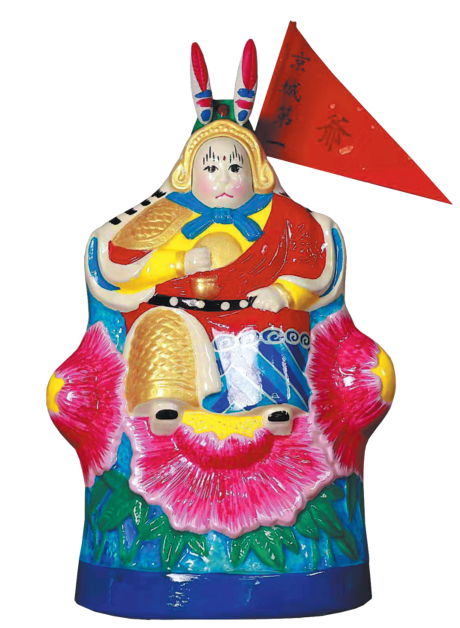
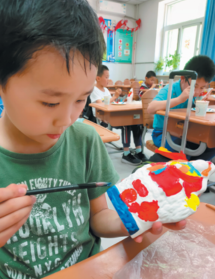
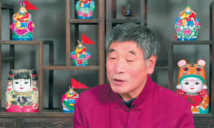
Today's Top News
- Restoring truth is the least we can do to serve history
- Israeli airstrikes hit Gaza amid worsening humanitarian crisis
- Book on Confucianism launched in Brussels
- Right track for China-ROK ties lauded
- Nursery rooms help fathers take part in parenting duties with more ease
- Typhoon Kajiki brings heavy rain in Hainan
















